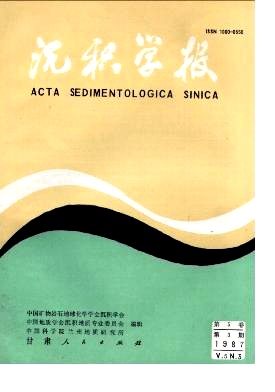THE MODERN DOLOMITE DISCOVERY AND SIGNIFICATION AT WEIZHOU ISLAND GUANGXI PROVINCE
- Publish Date: 1987-09-10
Abstract: The bioclastic limestone, most of which consist of coral fragment, is sedimented at northwest beach of the Weizhou Island, Guangxi A dolomite was discovered in its intergranular space. The age of bioclastic limestone, determined by C14, is about 2120 ± 90 years. The dolomite formed perhaps later than it. So it ought to belong to modern dolomite. The dolomite possesses variant crystal size, most of which are about 2-0.5mm. The crystal is perfect clear, transparent, and most of them are the aggregate form. The dolomite is characterized by optic monoaxial crystal negative optic character, No=1.678 Ne =1.514. specific gravity-equals 3.1, hardness equals 4. The dolomite was deiinitely testified by staining method, differential thermal analysis, infrared spectrometry and X-ray. According to lower much value of the δ13C , δ13C and seeping diagenetic environment in which the bioclastic limestone exists. we can firmly belive that the dolomite formed under the condition where mixed fresh water in to sea water.
| Citation: | Wang Yinghua. THE MODERN DOLOMITE DISCOVERY AND SIGNIFICATION AT WEIZHOU ISLAND GUANGXI PROVINCE[J]. Acta Sedimentologica Sinica, 1987, 5(3): 66-72. |






 DownLoad:
DownLoad: